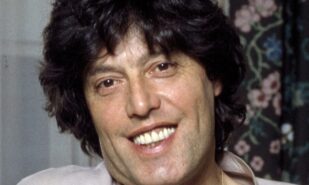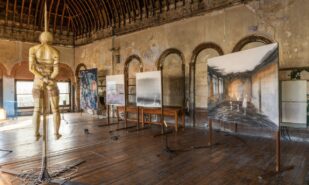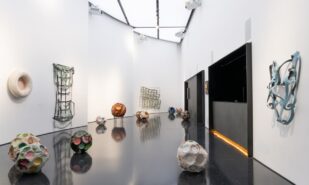The end of the 19th century was marked by an interesting trend in theatre – actresses became the protagonists of new dramatic works, with a time gap between the characters and actresses performing or singing them. Thus, the sensational play by the French playwrights Eugène Scribe and Ernest Legouvé was about the life of the actress of the Comédie Française Adrienne Lecouvreur written in 1849, while the play Tosca (1887) by Victorien Sardou, written for Sarah Bernhardt and performed in Porte-Saint-Martin theatre in Paris, features events in Rome in 1800. Victor Hugo’s prose play Angelo, Tyrant of Padua was written in 1835 about events in the 17th century Venice, and its main character is the opera singer Gioconda. It is important to note here that at the root of the word is the Italian verb ‘to play’ (giocare) or the noun ‘play’ (gioco). Libretti were written in the late 19th century from these three plays, bringing actresses and singers on stage as their protagonists. They were Gioconda (an opera singer) in the opera by Amilcare Ponchielli to a libretto by Arrigo Boito (premiered at La Scala in Milan in 1876), Adrienne Lecouvreur in Francesco Cilea’s opera Adriana Lecouvreur to a libretto by Arturo Colautti (premiered at Milan’s Teatro Lirico in 1902), and singer Floria Tosca in Giacomo Puccini’s opera to a libretto by Luigi Illica and Giuseppe Giacosa (premiered at Rome’s Teatro Constanzi in 1900).
Giocondas on stage: singers and actresses as protagonists of European operas

Among these three operas, Tosca is performed more often than others, being one of the jewels of the world repertoire. Adriana Lecouvreur is still staged relatively rarely, but could be found on world opera stages. And Ponchielli’s La Gioconda, which, along with Aida, belongs to Italian grand (or “serious”) opera and inherits the traditions of verismo style in opera, has until recently been a unique jewel on modern stage, although it is soon to be premiered at the Salzburg Easter Festival and screenings at the Teatro San Carlo in Naples with Anna Netrebko and Joseph Kaufmann, directed by Oliver Mears and under the musical direction of Antonio Pappano. In February 2024, all three of these operas could be seen in European opera houses – Adriana Lecouvreur, directed by the Scottish director David McVicar, was staged at the Paris Opera (with Anna Netrebko and Anna Pirozzi alternating in the title roles), Tosca, directed by Alvis Hermanis, was staged at the Staatsoper in Berlin. As for the unique La Gioconda with restored sets from its original premiere in Milan that were once discovered by its director Filippo Sanjust in an artist’s workshop in Rome, it had been performed at the Deutsche Oper for 50 years since 1974, and for the last time it could be seen there on 18 and 25 February 2024.
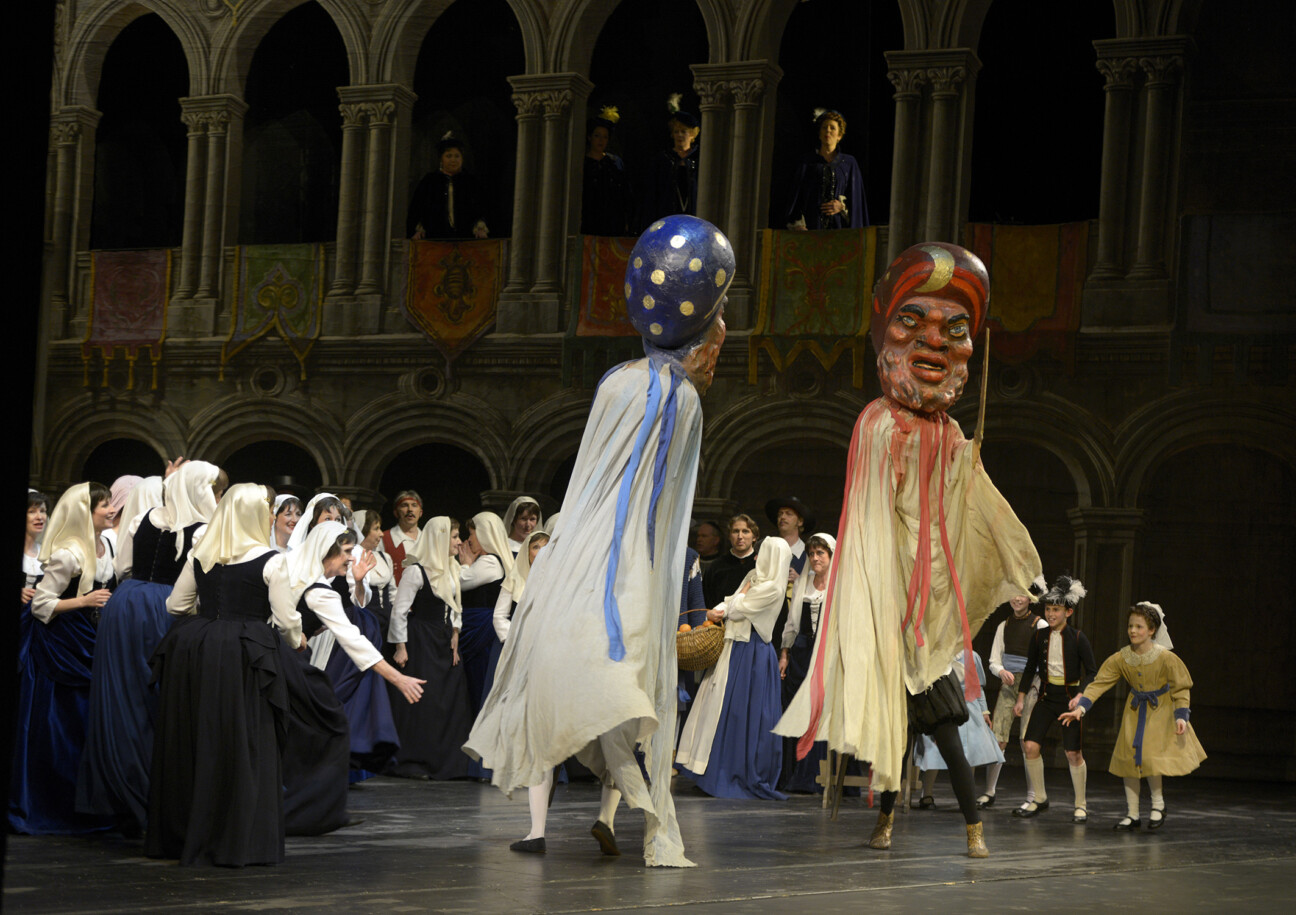
For Filippo Sanjust, historical accuracy was important in his production of La Gioconda. Thanks to the discovery of historical decorations, four huge three-dimensional 19th century sets were transferred to the stage of the Deutsche Oper, depicting the Venetian Piazza San Marco during the carnival in Act One, the brigantine Hecate in Act Two, the pompous palace of Duke Alvise Badoero in Act Three, and Gioconda’s beautiful, languid, ivy-covered house on Giudecca in Act Four. The opera had half-hour intermissions for each act to allow for a set change, and it rather unusually lasted about five hours, with each act running no more than 45-50 minutes. This production is not a postmodernist play using historical sets, rather, Sangjust adjusts to the discovery he has made and makes a reconstruction of this opera on a modern stage, also working as a costume (and they are obviously very expensive) designer for this production. This museum-like, historical feel that the opera exudes can be a bit off-putting at first, but the modern viewer is quickly convinced by the reconstructed traditions of the late 19th century productions and is mesmerised by the opulence of this opera, which includes a huge ballet piece in Act 3, at the Duke’s ball.
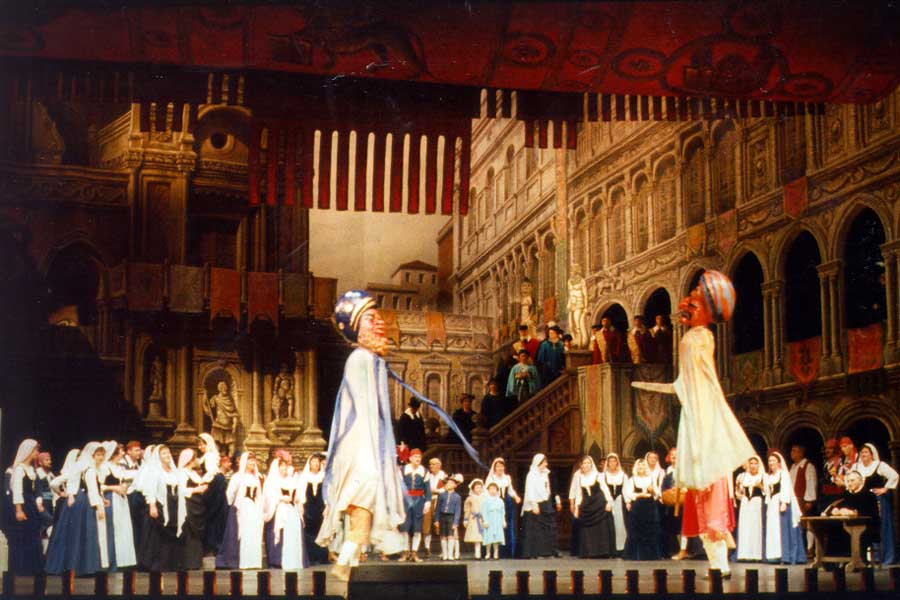
The plot of the opera Gioconda (based on Victor Hugo’s romantic drama) is full of passion, poisoning, dagger strokes, jealousy and face masks, and is very similar to Hugo’s other play also set in Venice, Lucrezia Borgia, written at the same time (1833). Filippo Sangiust deliberately does not create excessive blood and terror on stage, all the scenes of poisoning and death are shown within the 19th century operatic tradition, but he deliberately emphasises the most colourful and crowded moments (the carnival, the Duke’s ball), where the chorus of the Deutsche Oper, as well as the dancers Lisa Pavlov, Marian Walter and Michael Belilov excel. Here the singer Gioconda, in love with the Genoese patrician Enzo Grimaldo, despite her jealousy towards the Duke’s wife Laura, helps her reunite with Enzo (in love with Laura, not Gioconda) because Laura had saved Gioconda’s mother from accusations of witchcraft by Barnaba, a street singer working for Inquisition who desires Gioconda herself. Some deaths ensue, and there is a lot of self-sacrifice on the part of the protagonist.
At the end of this opera there is a scene reminiscent of the finale in Tosca – after the rescued Laura and Enzo leave for freedom and love in a gondola, Gioconda, who had promised Barnaba her honour in exchange for help in this rescue operation, kills the traitor who is requiring to spend the night with her. The singer Gioconda here appears a model of purity, inner strength, and the will for self-sacrifice. On the whole, this image remains unchanged in all three operas, and we can talk of a certain cliché being born here. The magnificent performance of the leading artists under the musical direction of John Fiore makes the evening very vivid, aimed at experiencing the beauty of this rare opera. Especially amazing are Carmen Giannattasio as Gioconda, Teresa Romano as Laura (they even look alike, the fact that speaks of interchangeability of women in this love triangle), Marco Mimica as the Duke and Angelo Villari as Enzo Grimaldo, whose romantic aria under the moonlight in the second act was the most subtle and sublime moment of the evening.
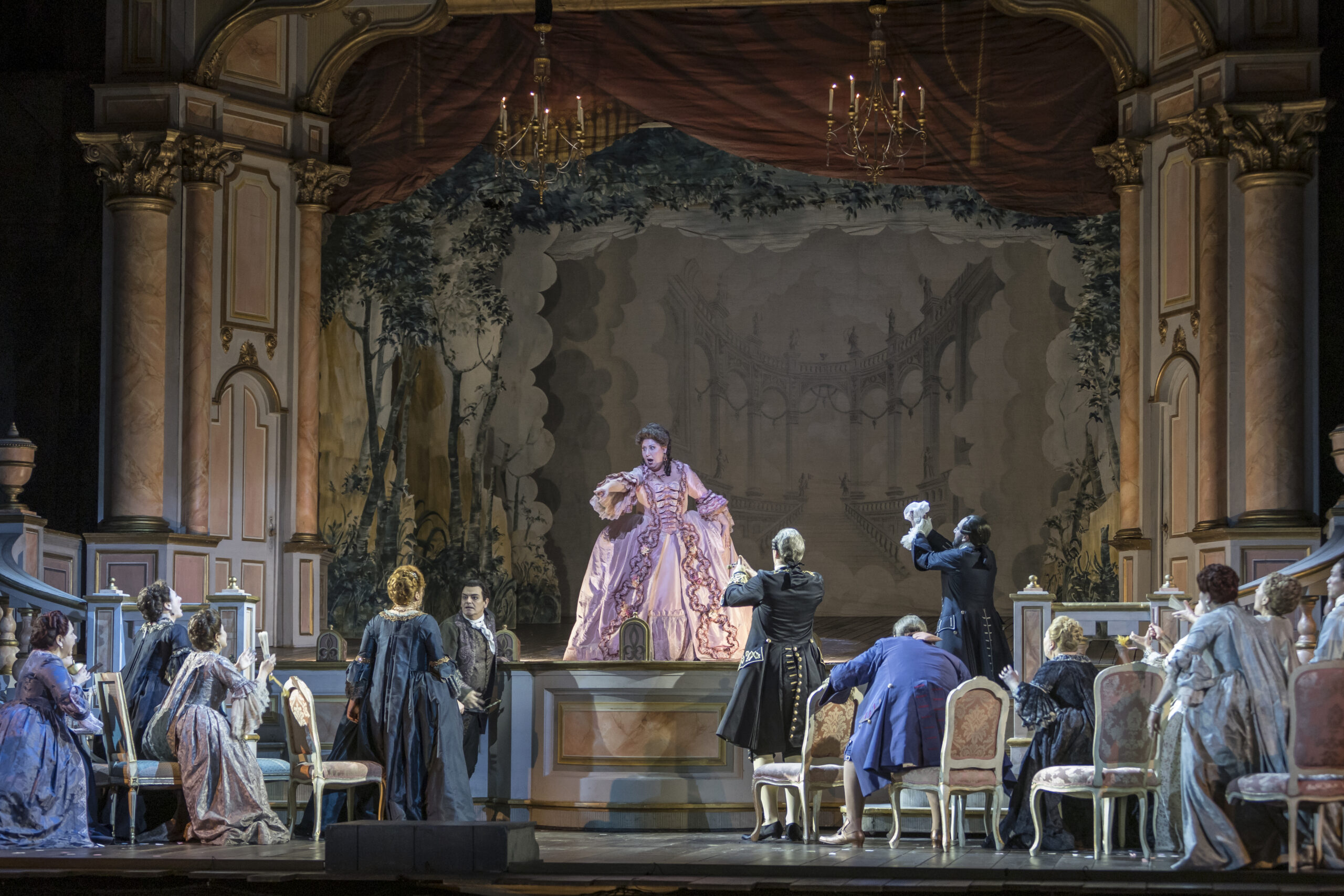
Historic accuracy and a go at authenticity was also important for David McVicar and his designer Charles Edwards and costume designer Brigitte Reiffenstuel in their Adriana Lecouvreur production staged at the Paris Opera in 2023, and previously running at London’s Covent Garden. However, the focus and approach is very different here. For McVicar, it is the historicity included in the modern version of the work that is important. The director puts a 18th-century theatre on the stage of the Paris Opera, juxtaposing its simplicity with the pomp of the world of princes and princesses, kings and ambassadors. At the opera’s opening we see a moving structure of a street stage, and observe very modest dressing rooms and dilapidated theatrical costumes at its back, while later Adriana has to find her way in a very sumptuous and austere space. They are the interiors of the Prince de Bouillon’s palace, and in fact also have a stage (‘All the world’s a stage’, as Shakespeare has said) where a ballet is played out to the audience of higher status. McVicar’s intention in comparing these multiple ‘theatres’ where one has to act her role, is obvious enough, and is certainly in line with both Scribe and Legouvé’s play and the opera’s libretto. The director sets out to compare the fragile lives of actors who play leading parts on theatre stage but are reduced to minor roles on the stage of court passions, and the lives of Princes, Counts and Duchesses full of lies and intrigues that ruin other people’s lives.
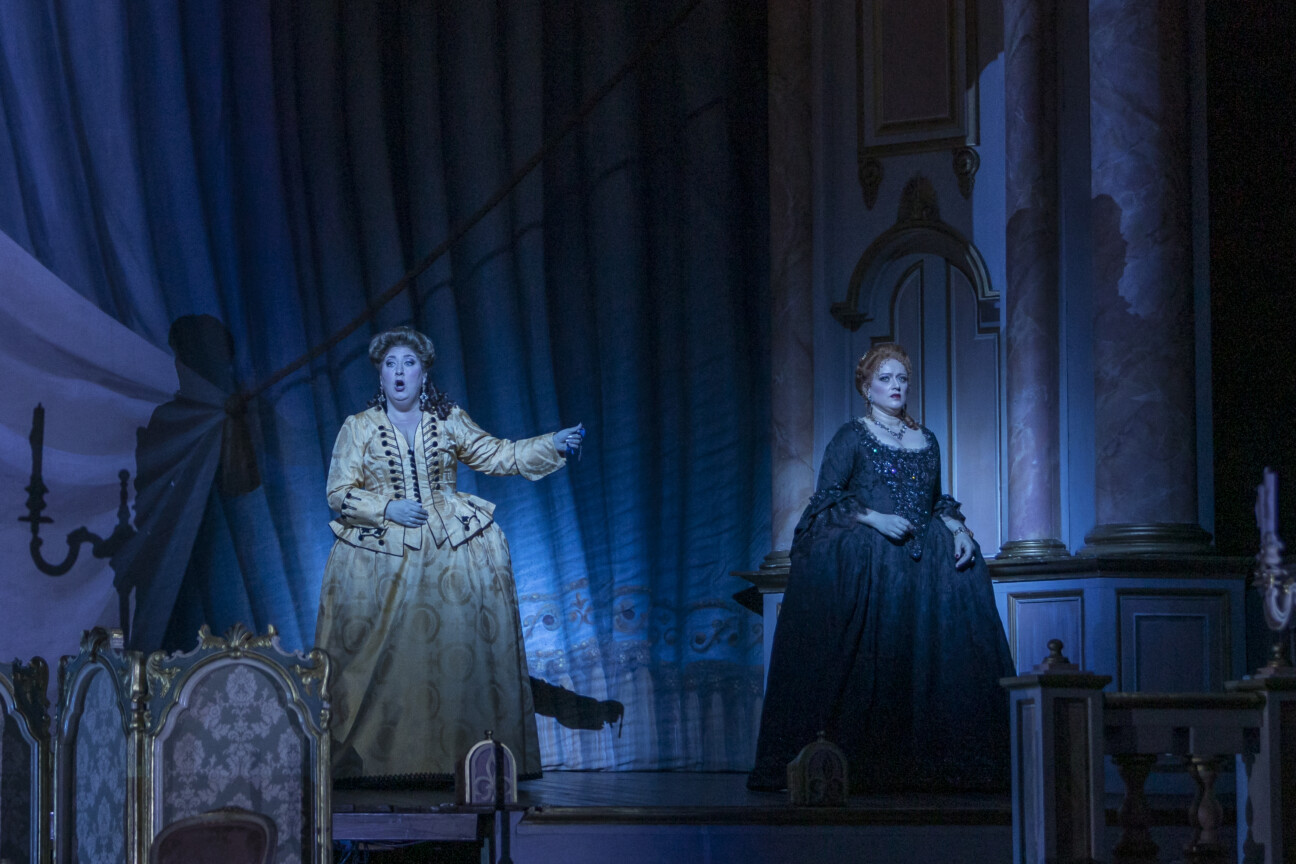
Surely, this is a somewhat idealised view reproducing the somewhat conventional image of the actress with a pure soul that becomes a victim of intrigues that has developed in the 19th century drama. However, here it is supplemented by numerous nuances, twists and turns, and the presence of metatheatrical elements. The modern viewer is not immediately convinced in the world of this production. It even has real burning candles, which the performer of the title role (soprano Anna Netrebko or Anna Pirozzi) extinguishes with a special metal snuffer. Gradually its apparent simplicity and conventional historicity reveals the “as if though” 18th-century theatre to create a discussion about theatricality and sincerity, honesty and feigned human emotions. Netrebko and Pirozzi approach this role in different ways – Netrebko’s Adriana is passionate, heart-broken and jealous, dying with longing and inescapable heartache, and Pirozzi’s Adriana is humble, revealing her soul gradually, singing about love poignantly, emphasising the quiet, crystalline notes. Baritone Abrogio Maestri is very good in the role of Michonne. It is also the explosive French mezzo-soprano Clementine Margen with her beautiful timbre and precise vocal intonation, who is able to outshine Pirozzi at certain moments, and is a marvel.
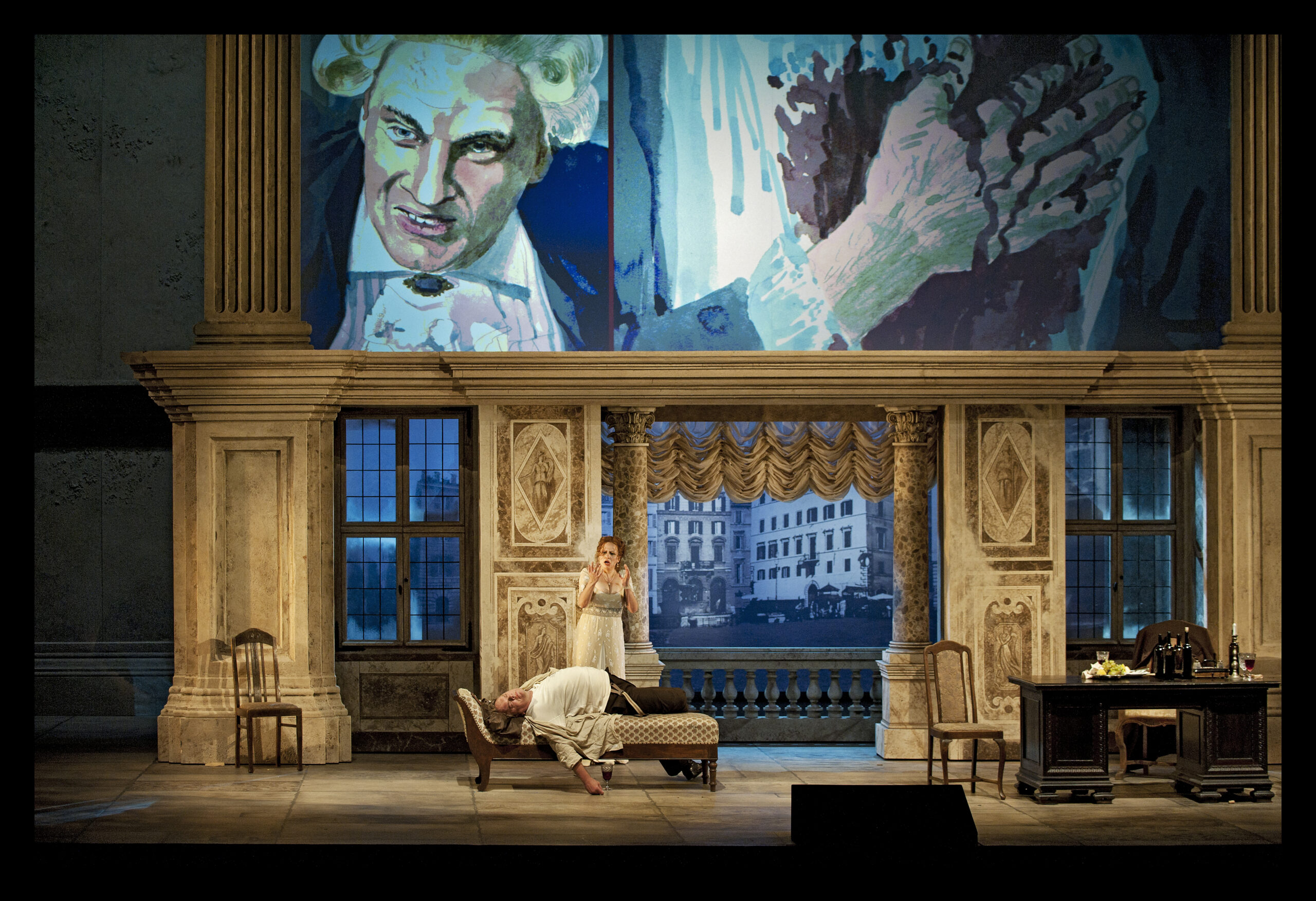
Credits: Hermann und Clärchen Baus
Alvis Hermanis’s Tosca with sets by Lithuanian theatre designer Kristine Jurjane, is very different from other two productions. It is conscious of the entire story of Floria Tosca on the world stage and of our experience of the story as seen or heard somewhere else, both in its visual interpretation and in its musical component. For Alvis Hermanis it is vital to create a gap between the opera written by Puccini and the time of the development of the action. But this is not the only thing that shapes our awareness that the story of Floriana Tosca and her love is only a story told on stage. We constantly see it told on a special storytelling screen, which seems to be masterfully built into the altar of the church in the first act, then into the window of the Farnese palace, where the chief of the Roman police, Scarpia, carries out his massacres, and later into the interior of the Castel Sant’Angelo. We are then listening to and watching the actual opera in parallel with the detailed development of the plot in pictures (one thinks of Japanese manga or French illustrated comics). The characters in the pictures have slightly different images, their emotions may even differ from what we see on stage (making us compare and reflect), but they are always present, creating a second story of Tosca that is told without words or music.

Credits: Hermann und Clärchen Baus
And this makes us conscious of the fact that this is nothing but a story. When watching the murder of Scarpia by Tosca, the death of Cavaradossi and the mortal jump of the singer herself, we can still see beautiful images of Rome in our set board picture plot and realise that this is just a game with certain emotional codes that have already been established in the history of opera. This is a very interesting solution, which does not at all cancel out the aesthetic pleasure of the beautiful, rather minimalist interiors of the opera and the wonderful performance of the leading soloists under the perfect, musically dense and intense direction of Colombian conductor Andres Orozco-Estrada. The biggest applause went to the singer Christopher Maltman, who played the most difficult role of the opera – that of Baron Scarpia – in a very psychologically convincing and even ironic manner.

Credits: Hermann und Clärchen Baus
The set image of an actress and singer with a crystal soul who has devoted her life to love and the stage is debunked by this production, and it leads us to new possible approaches to 19th-century drama in modern opera. It could be done ironically, with awareness of a certain conventionality of the genre, using all the variety of storytelling that the 20th and the 21st century have developed. In March 2024 The Exterminating Angel, the opera by contemporary British composer Thomas Adès, based on a script by Tom Kearns, was performed at the Paris Opera, and one of the characters here is also singer – a sumptuous and beautiful Lucia de Nobile, who is hosting guests after a performance of Lucia de Lammermoor. Here the 21st century offers a completely different, surreal and sinister, frankly absurdist interpretation for the new Gioconda, tapping on surrealist cinema discoveries made by Luis Buñuel. The singer as the opera protagonist is back in fashion.


